Super Flower Leadex Titanium 1600W Power Supply Review
Corsair's mighty AX1500i PSU must now face some stiff competition, as Super Flower's new Leadex Titanium 1600W offers even more power and efficiency.
Why you can trust Tom's Hardware
Ripple Measurements
To learn how we measure ripple, please click here.
The following table includes the ripple levels we measured on the SF-1600F14HT's rails. The limits are, according to the ATX specification, 120mV (+12V) and 50mV (5V, 3.3V and 5VSB).
| Ripple Measurements | |||||
|---|---|---|---|---|---|
| Test | 12V (mV) | 5V (mV) | 3.3V (mV) | 5VSB (mV) | Pass/Fail |
| 10% Load | 8.3 | 7.6 | 11.4 | 7.8 | Pass |
| 20% Load | 10.3 | 11.8 | 12.7 | 10.1 | Pass |
| 30% Load | 12.4 | 13.9 | 15.2 | 11.6 | Pass |
| 40% Load | 15.2 | 16.1 | 17.4 | 13.1 | Pass |
| 50% Load | 16.6 | 19.4 | 19.0 | 14.9 | Pass |
| 60% Load | 16.8 | 21.4 | 25.3 | 15.3 | Pass |
| 70% Load | 17.1 | 24.6 | 27.4 | 17.0 | Pass |
| 80% Load | 17.4 | 27.5 | 28.4 | 18.7 | Pass |
| 90% Load | 18.2 | 29.4 | 29.3 | 20.9 | Pass |
| 100% Load | 18.5 | 30.1 | 30.1 | 21.9 | Pass |
| 105% Load | 19.2 | 32.0 | 32.4 | 23.1 | Pass |
| Cross-Load 1 | 7.9 | 8.1 | 12.1 | 13.1 | Pass |
| Cross-Load 2 | 20.2 | 30.6 | 35.5 | 20.3 | Pass |
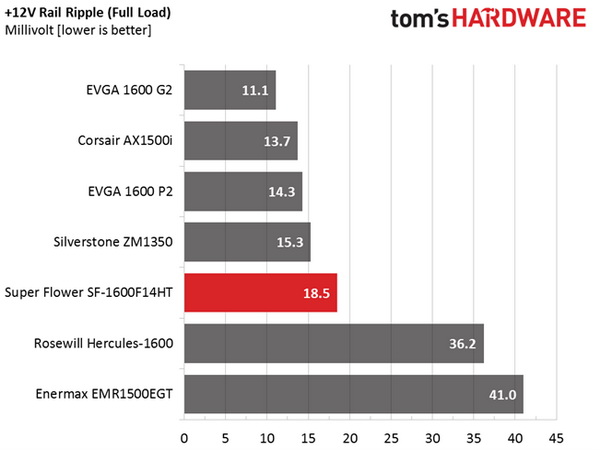
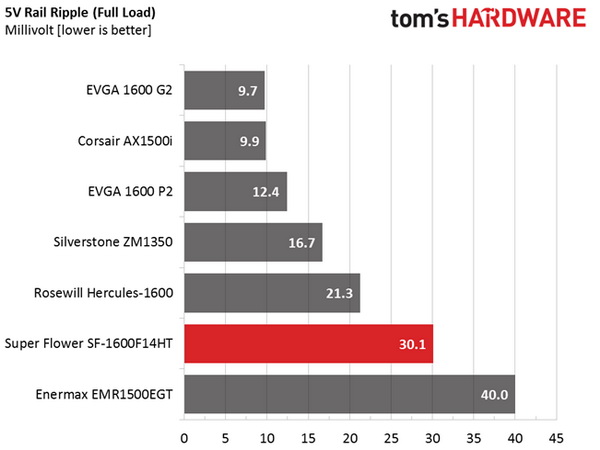
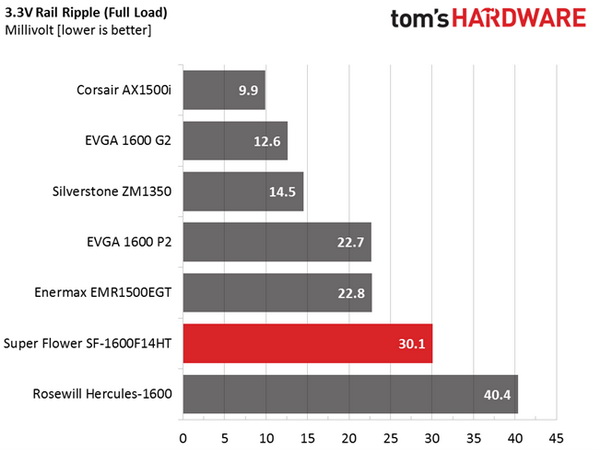
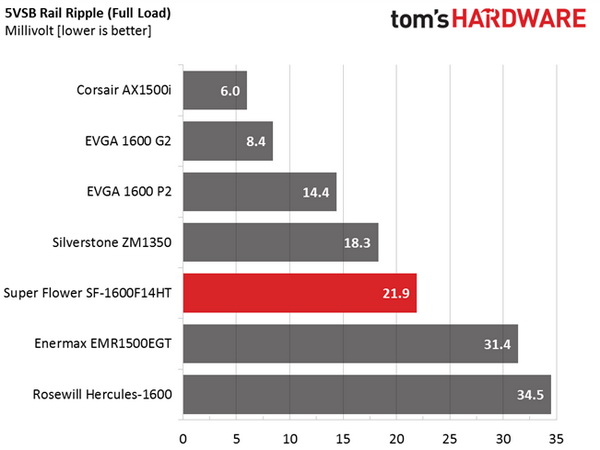
Ripple suppression is excellent on the +12V rail. However, on the minor rails (5V and 3.3V), we would like to see even lower ripple. The performance of the Gold- and Platinum-rated versions of this platform made us a bit more critical in this area, since both of them registered significantly lower ripple values on the minor rails.
Ripple
The following oscilloscope screenshots illustrate the AC ripple and noise that we registered on the main rails (+12V, 5V, 3.3V and 5VSB). The bigger the fluctuations on the screen, the bigger the ripple/noise. We set 0.01V/Div (each vertical division/box equals 0.01V) as the standard for all measurements.
Ripple At Full Load
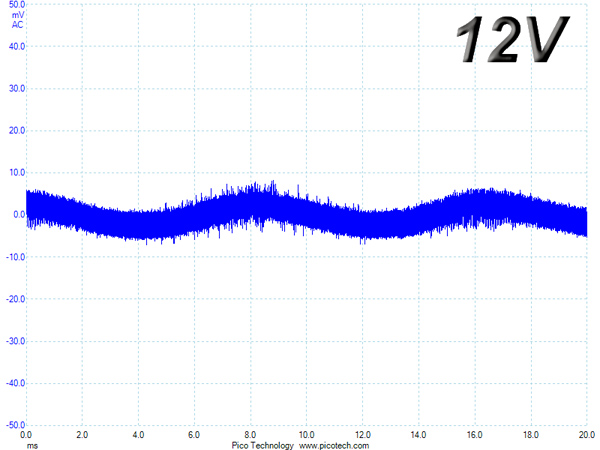
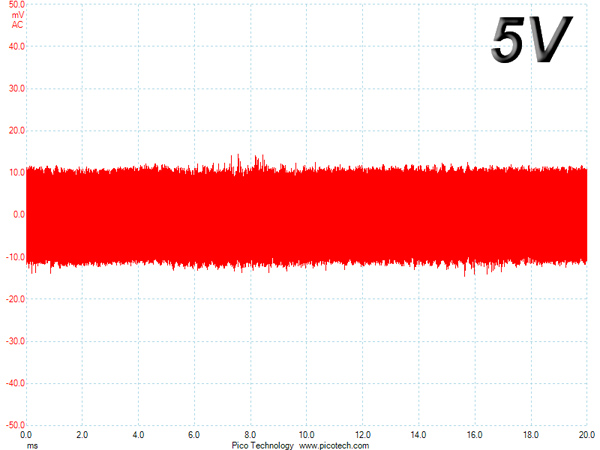
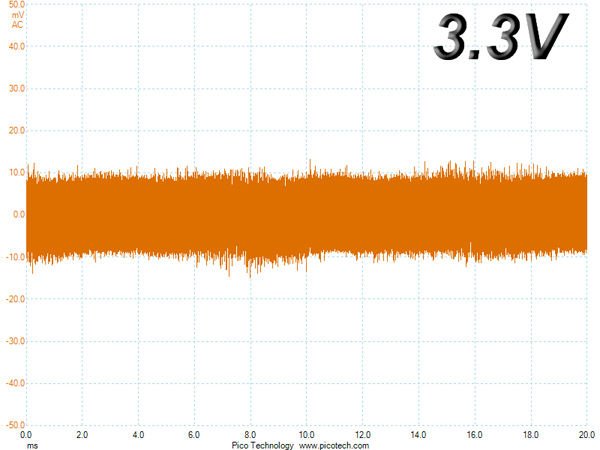

Ripple At 110-Percent Load
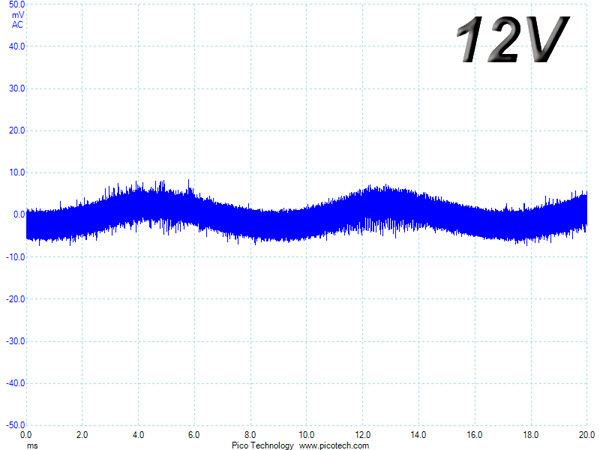
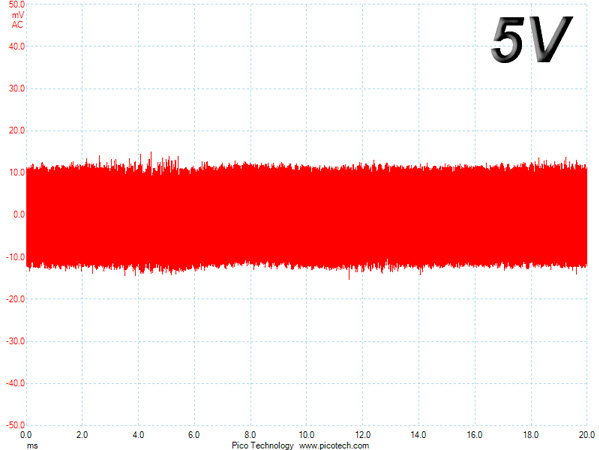
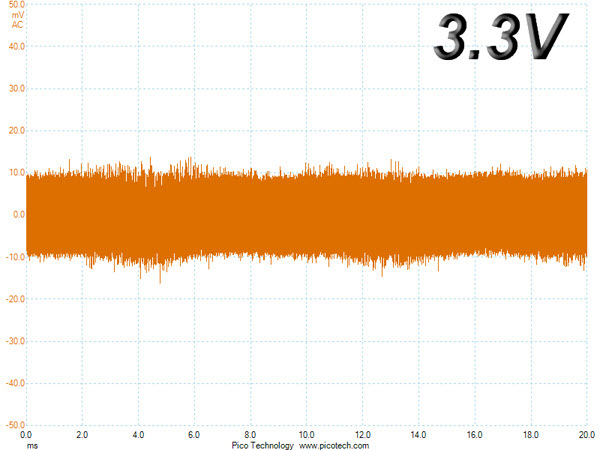
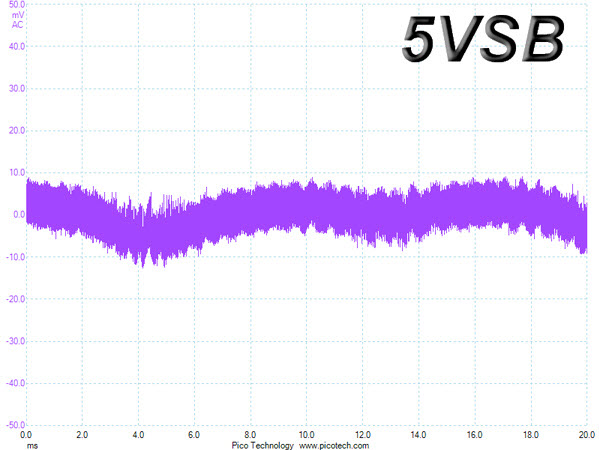
Ripple At Cross-Load 1
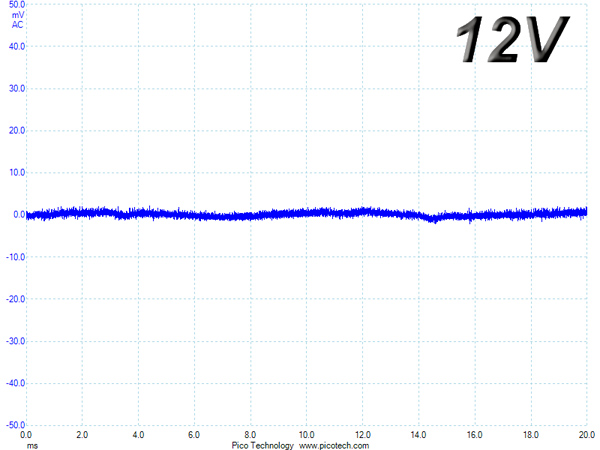
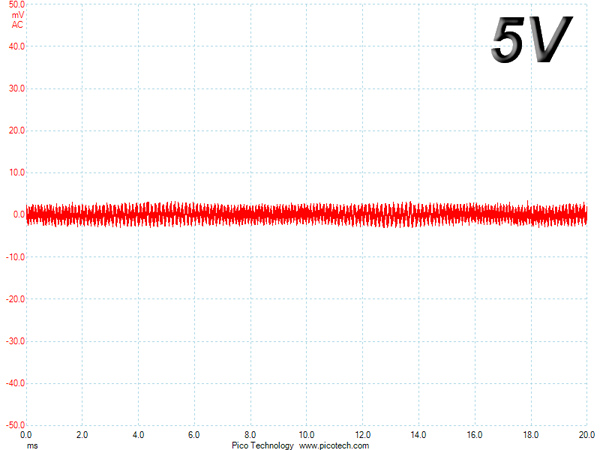
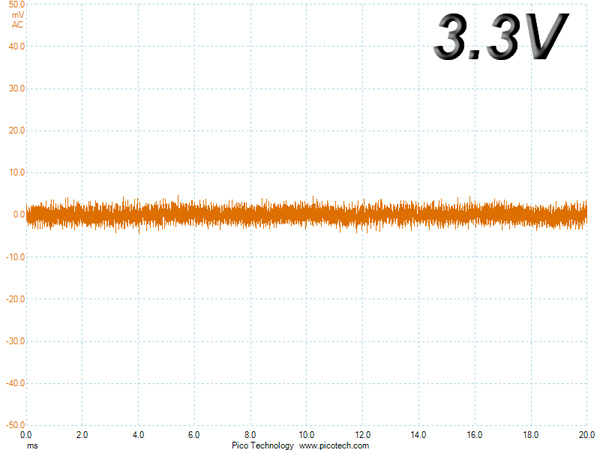
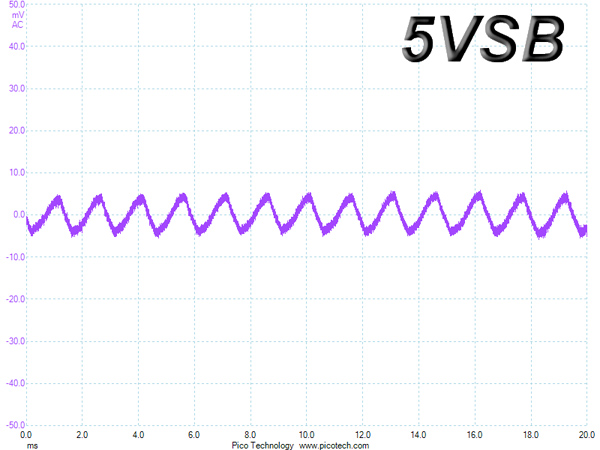
Ripple At Cross-Load 2
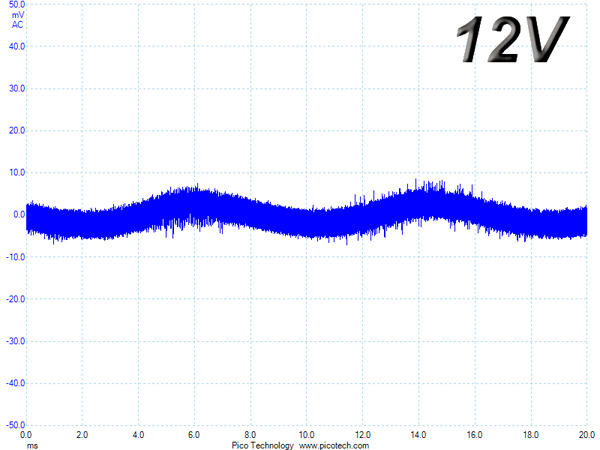
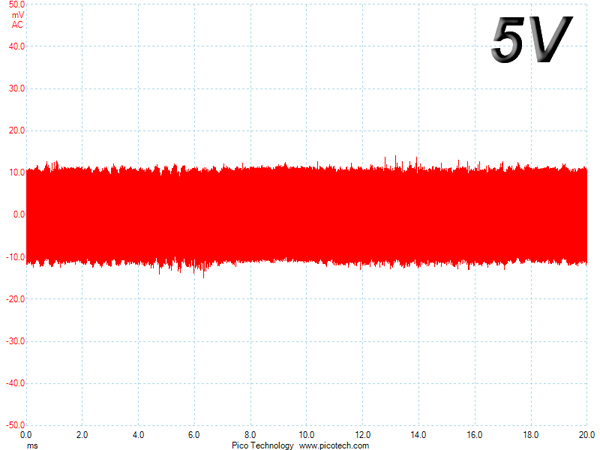
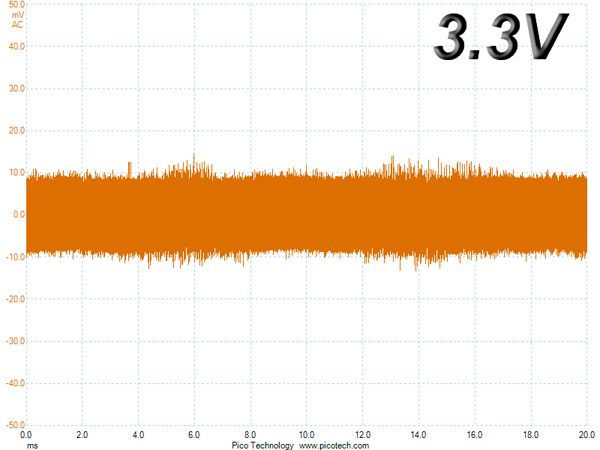
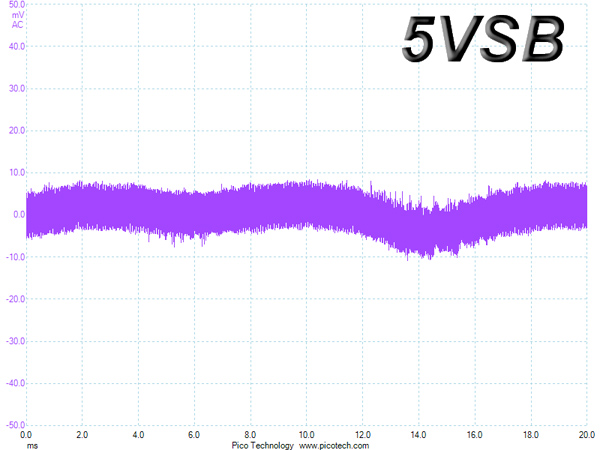
Get Tom's Hardware's best news and in-depth reviews, straight to your inbox.
Current page: Ripple Measurements
Prev Page Transient Response Tests Next Page Performance, Performance per Dollar, And Noise Ratings
Aris Mpitziopoulos is a contributing editor at Tom's Hardware, covering PSUs.
-
Shankovich As much as these super powered PSU reviews are interesting, I wouldn't mind seeing more PSU's for the regular non 4-way Crossfire/SLI user. I think in July you guys did some 450W reviews? Wouldn't also mind a battle of the basement review for those cheap PSU's just for fun. Again, love these 1000+ Watt reviews, but maybe toss in some sub 600W stuff in there more often if possible. Love the depth you guys go to in your PSU reviews!Reply -
MasterMace The Power Supply failed 80 Plus Titanium specifications at 50% (93.34% vs 94%) and 100% (89.61% vs 90%)Reply -
tanjo Page 9 graphs shows a different PSU (Corsair CS850M) though they all link to the correct full list images when clicked.Reply -
ko888 Reply15706850 said:The Power Supply failed 80 Plus Titanium specifications at 50% (93.34% vs 94%) and 100% (89.61% vs 90%)
80 PLUS certification occurs at 23°C only.
Tom's Hardware is testing in a hotbox at over 42°C. So how is that failing 80 Plus Titanium specifications when 80 PLUS Organization doesn't certify or even test at that temperature?
Kitguru.net measures efficiency at 35°C and the SuperFlower Leadex Titanium 1600W has no problem meeting 80 PLUS Titanium:
http://www.kitguru.net/components/power-supplies/zardon/superflower-leadex-titanium-1600w-review/6/ -
alidan ReplyAs much as these super powered PSU reviews are interesting, I wouldn't mind seeing more PSU's for the regular non 4-way Crossfire/SLI user. I think in July you guys did some 450W reviews? Wouldn't also mind a battle of the basement review for those cheap PSU's just for fun. Again, love these 1000+ Watt reviews, but maybe toss in some sub 600W stuff in there more often if possible. Love the depth you guys go to in your PSU reviews!
i personally cant see a reason to go lower than 650 watts, the most basic computer with a gpu may only use 50-60% of it at load, but the head room is valued by me far more than the cheaper outset cost...
i had a psu blow up on me... never again. -
Aris_Mp ReplyAs much as these super powered PSU reviews are interesting, I wouldn't mind seeing more PSU's for the regular non 4-way Crossfire/SLI user. I think in July you guys did some 450W reviews? Wouldn't also mind a battle of the basement review for those cheap PSU's just for fun. Again, love these 1000+ Watt reviews, but maybe toss in some sub 600W stuff in there more often if possible. Love the depth you guys go to in your PSU reviews!
As much as these super powered PSU reviews are interesting, I wouldn't mind seeing more PSU's for the regular non 4-way Crossfire/SLI user. I think in July you guys did some 450W reviews? Wouldn't also mind a battle of the basement review for those cheap PSU's just for fun. Again, love these 1000+ Watt reviews, but maybe toss in some sub 600W stuff in there more often if possible. Love the depth you guys go to in your PSU reviews!
As much as these super powered PSU reviews are interesting, I wouldn't mind seeing more PSU's for the regular non 4-way Crossfire/SLI user. I think in July you guys did some 450W reviews? Wouldn't also mind a battle of the basement review for those cheap PSU's just for fun. Again, love these 1000+ Watt reviews, but maybe toss in some sub 600W stuff in there more often if possible. Love the depth you guys go to in your PSU reviews!
The next PSUs will be more down to earth, with sub-1000 W capacities
-
Aris_Mp ReplyThe Power Supply failed 80 Plus Titanium specifications at 50% (93.34% vs 94%) and 100% (89.61% vs 90%)
Page 9 graphs shows a different PSU (Corsair CS850M) though they all link to the correct full list images when clicked.
Already informed the editors responsible to fix this. Thanks!